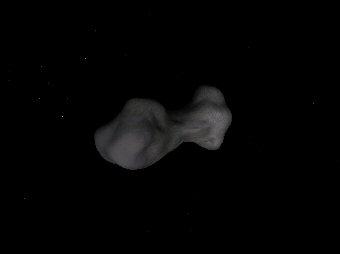BY LETTER
Metallic type Asteroid
Sideritic asteroids are composed of almost pure nickel iron, and represent a sizeable proportion of all asteroids in most star systems. They are moderately bright and fairly dense. It is believed that these asteroids originated from larger parent bodies that had developed sufficiently to become differentiated; that is, they had begun to form a crust, mantle, and core. Almost certainly these bodies were then destroyed by collisional processes with other bodies in the very early stages of planetary formation, when a typical inner system region might contain hundreds of planetesimal bodies. The result would be, of course, the smaller and often irregularly shaped metallic Sideritic asteroids.
Many Siderites have eccentric orbits, reflecting the volatile birth that they experienced. However, many are also found in confined belt orbits. Those in belt orbits are prone to further impacts with other belt objects, and as such represent the source of most iron meteorites.
Sideritic asteroids, classically called M-type asteroids, are probably the richest and most sought after of bodies when it comes to minerals. Planetary economies are often maintained by the mining of these bodies, and industrial bases often rely on Siderites for raw materials in the manufacture of many items.
Many Siderites have eccentric orbits, reflecting the volatile birth that they experienced. However, many are also found in confined belt orbits. Those in belt orbits are prone to further impacts with other belt objects, and as such represent the source of most iron meteorites.
Sideritic asteroids, classically called M-type asteroids, are probably the richest and most sought after of bodies when it comes to minerals. Planetary economies are often maintained by the mining of these bodies, and industrial bases often rely on Siderites for raw materials in the manufacture of many items.
Related Articles
Appears in Topics
Development Notes
Text by John M Dollan
Initially published on 24 September 2001.
Initially published on 24 September 2001.







